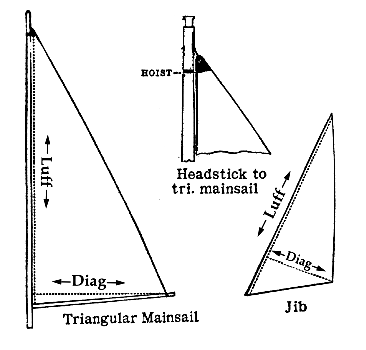by Charlie Roden
Background
The United States Vintage Model Yacht Group (US VMYG) was formed as a Special Interest Group of the American Model Yachting Association (AMYA) in 1994. The Vintage Marblehead (VM) Group was established as a key element of US VMYG program at its inception. Local and national VM regattas have been held annually since 1995.
A Vintage Marblehead is defined as a Marblehead model yacht having the characteristics of a 1930 to 1970 Marblehead model yacht. A builder may choose to restore an existing boat or build a new boat based on an existing vintage design. A builder may alternatively formulate a new design based on the design characteristics typical of these early Marblehead model yachts.
These rating rules modify the earlier Model Yacht Racing Association of America Marblehead (MYRAA) class rules with supplemental restrictions aimed at producing comparable racing performance at vintage regattas. As a development class, the Marblehead has undergone a significant evolution over the forty year interval and in order to achieve comparable racing performance, the VM Group has been divided into two design divisions: Traditional VM & High Flyer VM. The two divisions may be raced together or separately, as numbers permit, with separate trophies being awarded to the top finishers in each division.
The Traditional Division covers roughly the first half of the forty year development period. Traditional Division boats are characterized by short waterlines, integral skeg and rudder arrangements, shallow draft, and low aspect ratio sail forms. The High Flyer Division boats, covering the second half of the period, have deeper keels, full waterlines, taller rigs and balanced spade rudders. The determination of which division a boat belongs to depends on the boats design characteristics as set forth in these rules. Design dates, while helpful, are not used as a criteria for assigning boats to divisions as records have proven to be inadequate for this purpose.
Traditional Marblehead Division
The Traditional Division Vintage rules are based the MYRAA Rating Rules for the Marblehead 50-800 Class as revised to June 1, 1939:
1. Formula
1.1 Overall Hull Length 50 inches plus or minus a quarter of an inch.
1.2 Total Sail Area Shall not exceed 800 square inches.
2. Prohibited
2.1 Sliding or adjustable keels
2.2 Centerboards
2.3 Leeboards
2.4 Bilge-boards
2.5 Bowsprits
2.6 Overhanging rudders
2.7 Outriggers, pontoons, or twin hulls
2.8 Movable or shifting ballasts
2.9 Prognathous keels (no portion of the leading edge of the keel appendage, including the lead, may project forward of any portion of the leading edge above)
2.10 Metal fin keels
2.11 Materials with density greater than lead
2.12 Carbon fiber or Kevlar in the hull rudder or rig
2.13 Fabric or film decks
2.14 Mylar sails
2.15 Swing rigs
3. Garboards
3.1 Hollow of garboards shall not be less than one inch radius and may be checked by use of a disc two inches in diameter, applied to the garboards at a convenient station.
4. Ballast
4.1 Total Ballast: Total ballast shall not be changed during a race or a series of races.
4.2 Inside Ballast: Inside ballast must be fixed.
4.3 Ballast Weight & Displacement
There are no restrictions on ballast weight or total model displacement.
5. Draft
Maximum draft of a Traditional VM model yacht fully rigged and ready to sail shall in no case exceed twelve inches. The intent of this rule is to require conformity to the keel design of early boats and in so doing also indirectly limit rig height.
6. Hull
6.1 Construction and Materials
Hulls shall be primarily constructed by the methods and materials of the period as follows:
Hulls shall be constructed of wood including plank-on-frame, horizontal lifts, vertical lifts, or laid-up fiberglass. Molded fiberglass hulls shall be comparable in weight to a wood-constructed hull from the same design plan.
Fiberglass covering of wood is permitted as a method of sealing and strengthening the basic wooden hull.
Modern adhesives are allowed to produce a stronger hull that is impervious to leaks.
6.2 Hull Shape and Configuration
There are no restrictions on load waterline length, beam, freeboard or tumblehome.
6.3 Bumpers
Bumpers are mandatory and are limited to one half inch overhang. Bumpers shall not be included in the overall measurement, whether built-in, recessed, or otherwise attached to the model yacht.
7. Rig
7.1 Types
Bermuda, Marconi, jib-headed mainsail, Gaff, Gunter, Wishbone, etc. may be used.
7.2 Alternate Rigs
Alternate rigs are allowed, provided the total sail area does not exceed 800 square inches. Details of such rigs must be comparable to the original sail plan.
7.3 Head Stay Height Height of the jib head stay above the deck shall not exceed 80 per cent of the height of the head of the mainsail above the deck.
8. Mast and Spars
8.1 Materials
Mast and booms shall be constructed from material of the period: namely either wood or aluminum.
8.2 Height
Height of the head of the mainsail above the deck shall not exceed 85 inches.
8.3 Diameter
The greatest diameter of mast and spars is limited to three-quarters of an inch.
8.4 Configurations: Hollow masts and spars, permanently bent masts and spars, and rotating and bipod masts are allowed. Measurements of raking masts are taken exactly the same as vertical masts. Masts and spars are not included in the sail area measurement. Any increase in sail area by the use of a bent mast and spars shall be measured as a bow and added to the sail area.
9. Sails
9.1 Construction and Materials
Sails shall be constructed by the methods and materials of the period as follows:
Sails shall be made of either single panel or multi-panel sailcloth. The body of each sail shall be made of woven cloth, such as cotton, cotton/synthetic blend, Dacron, or Nylon. No material other than woven sailcloth is allowed for tablings or corner reinforcements in the head tack or clew of any sail except reinforcing tape.
Roach of sails shall not exceed two inches. Rounded foot of loose-footed sails shall not exceed one inch.
Mainsail battens shall not exceed four in number and four inches in length, and shall divide the mainsail leech into approximately equal parts. Headsail battens shall not exceed three in number and two inches in length, and shall divide the headsail leech into approximately equal parts.
Headsticks or headboards shall not exceed three-quarters of an inch across the base for headsails and mainsails. No other wire or other stiffening shall be put in the head ofsails.
The measurement of sails is as specified in the 1958 MYRAA Handbook. Only the actual sail area, excluding roaches and rounded edge of loose-footed sails is measured. The attached figure indicates the layout for triangular sails. The luff is measured from the lowest point on the tack of the sail to the bottom edge of the headstick or headboard. If the sail has no headboard, the measurement is taken to a point at the head of the sail where the width of the sail is three quarters of an inch. The diagonal is measured from the aft edge of the clew to the closest point on the luff. The sail area of each sail is given by: Sail Area = (Luff Measurement X Diagonal Measurement)/2 The sum of the areas for the jib and mainsail must be less than 800 square inches.
10. Rudders
10.1 Alternate Rudders
It is forbidden to change rudders during a race or series of races except in bona fide cases of damage.
10.2 Rudder Shape
The rudder for a Traditional Division VM shall be keel or skeg mounted in keeping with design methods of this period. It is permissible to enlarge the area of the rudder from its original size in order to achieve acceptable steering with radio control. Balanced spade rudders are not allowed. A boat that is Traditional in all respects other that the rudder shall be scored with the High Flyer Division.
11. Radio Control
Only the rudder, headsail and mainsail sheets may be adjusted by radio control.
High Flyer Vintage Marblehead
The High Flyer Vintage rules are based the MYRAA Rating Rules for the Marblehead 50/800 Class as revised to 1954. They are identical to the Traditional Rules except for the following:
10.2 Rudder Shape
Balanced spade rudders are allowed in the High Flyer Division in keeping with design methods of this period. A boat that is Traditional in all respects other than using a balanced rudder shall be scored with the High Flyer Division.
10.3 Draft Maximum draft of a High Flyer Model Yacht fully rigged and ready to sail shall in no case exceed 16 inches. The intent of this rule is to allow conformity to the keel design of later vintage boats and in doing so permit taller rigs.
 Vintage Insignia and Sail Numbers
Vintage Insignia and Sail Numbers
All Vintage Marblehead Yachts shall be officially registered with the VM Group Secretary to obtain an official sail number. Sail numbers shall be three inches tall and of ¸ inch thickness and shall be affixed to both sides of the mainsail between the second and third battens parallel to the leech. The VM group insignia consists of a nested “V” above an “M” as shown in the attached figure. The letters are 1 1/2 inches tall and 1 1/ inch wide with a thickness of 1/4 inch. The “V” is separated from the “M” by 1/16 of an inch. The “M” should always of the color black and the “V” may be in a color of your choice to perhaps match the numbers color or a hull color. The insignia need be only placed on the starboard side of the mainsail in the upper quadrant.
Construction Excellence Awards
At each National Regatta all VM yachts present shall be judged for construction excellence and up to three awards presented to the owners of the top three boats. A VM need not race in the regatta to be included in the construction judging. These awards are presented in addition to awards presented for the top racing finishers. The owner of each yacht entered in the construction judging must be either the restorer or builder of the yacht entered in the contest.

